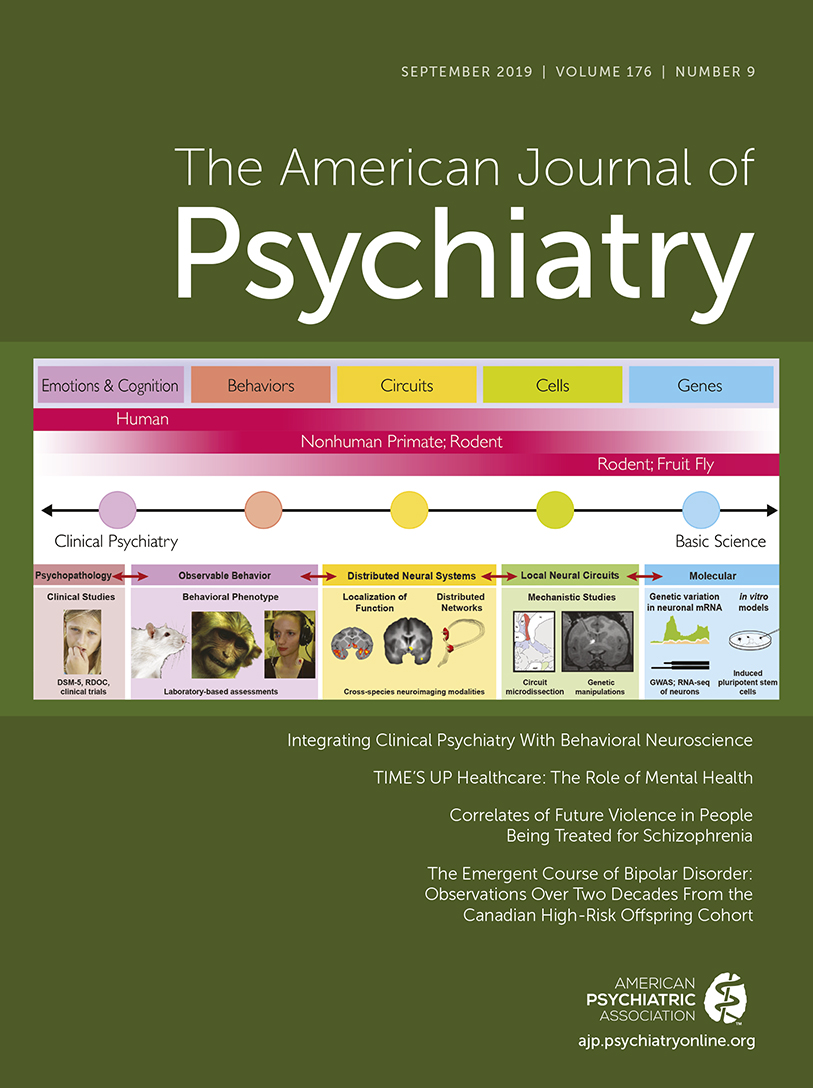The Emergent Course of Bipolar Disorder: Observations Over Two Decades From the Canadian High-Risk Offspring Cohort
Abstract
Objective:
The authors sought to describe the emergent course of bipolar disorder in offspring of affected parents subgrouped by parental response to lithium prophylaxis.
Methods:
Parent bipolar disorder was confirmed by the best-estimate procedure and lithium response by research protocol. High-risk offspring (N=279) and control subjects (N=87) were blindly assessed, annually on average, with the Kiddie Schedule for Affective Disorders and Schizophrenia–Present and Lifetime version or the Schedule for Affective Disorders and Schizophrenia–Lifetime version. DSM-IV diagnoses were confirmed using the best-estimate procedure in blind consensus reviews. Cumulative incidence and median age at onset were determined for lifetime syndrome- and symptom-level data. Mixed models assessed the association between parent and offspring course. A multistate model was used to estimate the clinical trajectory into bipolar disorder.
Results:
The cumulative incidence of bipolar disorder was 24.5%, and the median age at onset was 20.7 years (range, 12.4 to 30.3). The clinical course of the affected parent was associated with that of the affected child. Depressive episodes predominated during the early bipolar course, especially among offspring of lithium responders. Childhood sleep and anxiety disorders significantly predicted 1.6-fold and 1.8-fold increases in risk of mood disorder, respectively, and depressive and manic symptoms predicted 2.7-fold and 2.3-fold increases in risk, respectively. The best-fit model of emerging bipolar disorder was a progressive sequence from nonspecific childhood antecedents to adolescent depression to index manic or hypomanic episode. Subthreshold sleep symptoms were significantly associated with transition from well to non-mood disorder, and psychotic symptoms in mood episodes were significantly associated with transition from unipolar to bipolar disorder.
Conclusions:
Bipolar disorder in individuals at familial risk typically unfolds in a progressive clinical sequence. Childhood sleep and anxiety disorders are important predictors, as are clinically significant mood symptoms and psychotic symptoms in depressive episodes.



